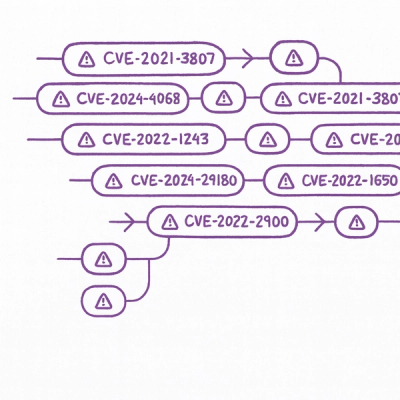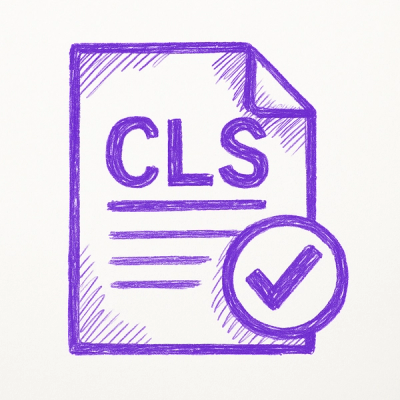
Security News
Astral Launches pyx: A Python-Native Package Registry
Astral unveils pyx, a Python-native package registry in beta, designed to speed installs, enhance security, and integrate deeply with uv.
SimpleCaptcha(2) is the simplest and a robust captcha plugin. Its implementation requires adding up a single line in views and in controllers/models.
SimpleCaptcha2 is available to be used with Rails 3 + 4.
This is a fork of the popular Rubygem simple_captcha which got abandoned.
<%= show_simple_captcha %> within the 'form' tags.You might need to install Ghostscript on a Mac-System or a Debian-System:
brew install ghostscript
apt-get install ghostscript
The default font, that imagemagick uses is Arial. Make sure that font is available (apt install ttf-mscorefonts-installer) or change the font in the SimpleCaptcha config.
Put this into your Gemfile
gem 'simple_captcha2', require: 'simple_captcha'
and run bundle install.
After installation, follow these simple steps to setup the plugin. The setup will depend on the version of rails your application is using.
rails generate simple_captcha [template_format] # Available options erb, haml. Default: erb
rake db:migrate # Mongoid: skip this step and remove the migration
There are two usage scenarios:
Add the following line in the file "app/controllers/application.rb"
ApplicationController < ActionController::Base
include SimpleCaptcha::ControllerHelpers
end
In the view file within the form tags add this code
<%= show_simple_captcha %>
and in the controller's action authenticate it as
if simple_captcha_valid?
do this
else
do that
end
This is suggested, if you want to integrate the error message into the normal form validation flow.
In the view file within the form tags write this code
<%= show_simple_captcha(:object=>"user") %>
and in the model class add this code
class User < ActiveRecord::Base
apply_simple_captcha
end
Mongoid:
class User
include SimpleCaptcha::ModelHelpers
apply_simple_captcha
end
Must add them:
:captcha, :captcha_key
<%= form_for @user do |form| -%>
...
<%= form.simple_captcha :label => "Enter numbers.." %>
...
<% end -%>
NOTE: @user.valid? will still work as it should, it will not validate the captcha code.
@user.valid_with_captcha?
NOTE: @user.save will still work as it should, it will not validate the captcha code.
@user.save_with_captcha
SimpleCaptcha detects if you are using Formtastic:
<%= form.input :captcha, :as => :simple_captcha %>
You can make the Captcha always pass with a initializer file: config/initializers/simple_captcha.rb
SimpleCaptcha.always_pass = Rails.env.test?
You can also ask for the value, e.g. Acceptance Tests/Features:
visit '/pages/form_tag'
assert_equal 1, SimpleCaptcha::SimpleCaptchaData.count
fill_in 'captcha', with: SimpleCaptcha::SimpleCaptchaData.first.value
simple-captcha2 supports 3 type of ORM: ActiveRecord, Sequel and Mongoid.
Selection of ORM is base on loaded classes. If ActiveRecord is loaded then it will be used for the simple captcha data model.
If ActiveRecord is undefined, Sequel presence is tested. If Sequel is defined it will used for the simple captcha data model.
If not, Mongoid is used.
For instance if your application is using Sequel as an ORM just make sure you require sequel-rails gem before simple-captcha2
in your Gemfile and respective model will be selected automatically.
:label - provides the custom text b/w the image and the text field, the default is "type the code from the image":object - the name of the object of the model class, to implement the model based captcha.:code_type - return numeric only if set to 'numeric':multiple - allow to use the same captcha in multiple forms in one page. True for the first appaerance and false for the rest.:image_style - provides the specific image style for the captcha image.
There are eight different styles available with the plugin as...Default style is 'simply_blue'. You can also specify 'random' to select the random image style.
:distortion - handles the complexity of the image. The :distortion can be set to 'low', 'medium' or 'high'. Default is 'low'.
:implode - handles the complexity of the image. The :implode can be set to 'none', 'low', 'medium' or 'high'. Default is 'medium'.
Create "./config/initializers/simple_captcha.rb"
SimpleCaptcha.setup do |sc|
# default: 100x28
sc.image_size = '120x40'
# default: 5
sc.length = 6
# default: simply_blue
# possible values:
# 'embosed_silver',
# 'simply_red',
# 'simply_green',
# 'simply_blue',
# 'distorted_black',
# 'all_black',
# 'charcoal_grey',
# 'almost_invisible'
# 'random'
sc.image_style = 'simply_green'
# default: low
# possible values: 'low', 'medium', 'high', 'random'
sc.distortion = 'medium'
# default: medium
# possible values: 'none', 'low', 'medium', 'high'
sc.implode = 'low'
end
You can add your own style:
SimpleCaptcha.setup do |sc|
sc.image_style = 'mycaptha'
sc.add_image_style('mycaptha', [
"-background '#F4F7F8'",
"-fill '#86818B'",
"-border 1",
"-bordercolor '#E0E2E3'"])
end
You can provide the path where image_magick is installed as well:
SimpleCaptcha.setup do |sc|
sc.image_magick_path = '/usr/bin' # you can check this from console by running: which convert
end
You can setup in which format the reload of the captcha is executed:
SimpleCaptcha.setup do |sc|
sc.refresh_format = :prototype # or :jquery, or :plain_javascript default is :jquery
end
If needed, you can explicitly state the font used for generating the captcha:
SimpleCaptcha.setup do |sc|
sc.font = "DejaVu-Sans"
end
You can change the CSS of the SimpleCaptcha DOM elements as per your need in this file.
app/views/simple_captcha/_simple_captcha.erb
<%= show_simple_captcha %>
<%= show_simple_captcha(:label => "human authentication") %>
<%= show_simple_captcha(:object => 'user', :label => "human authentication") %>
:message - provides the custom message on failure of captcha authentication the default is "Secret Code did not match with the Image"
:add_to_base - if set to true, appends the error message to the base.
class User < ActiveRecord::Base
apply_simple_captcha
end
class User < ActiveRecord::Base
apply_simple_captcha :message => "The secret Image and code were different", :add_to_base => true
end
en:
simple_captcha:
placeholder: "Enter the image value"
label: "Enter the code in the box:"
refresh_button_text: "Refresh"
message:
default: "Secret Code did not match with the Image"
user: "The secret Image and code were different"
For testing, generate a temporary Rails dummy app inside test:
bundle
bundle exec rake dummy:setup
bundle exec rake app:db:migrate
bundle exec rake app:db:migrate RAILS_ENV=test
bundle exec rake test
Please add test cases when adding new functionality. I started with some basic example integration tests for a very basic coverage.
The tests will be run on Travis-CI.
Enjoy the simplest captcha implementation.
Original Author of the Version for Rails 2: Author: Sur, Blog: http://expressica.com, Contact: sur.max@gmail.com Plugin Homepage: http://expressica.com/simple_captcha
Plugin update for rails 3: http://github.com/galetahub
update for Rails 4, tests and forked by Stefan Wienert (pludoni GmbH)
FAQs
Unknown package
We found that simple_captcha2 demonstrated a not healthy version release cadence and project activity because the last version was released a year ago. It has 4 open source maintainers collaborating on the project.
Did you know?

Socket for GitHub automatically highlights issues in each pull request and monitors the health of all your open source dependencies. Discover the contents of your packages and block harmful activity before you install or update your dependencies.

Security News
Astral unveils pyx, a Python-native package registry in beta, designed to speed installs, enhance security, and integrate deeply with uv.

Security News
The Latio podcast explores how static and runtime reachability help teams prioritize exploitable vulnerabilities and streamline AppSec workflows.

Security News
The latest Opengrep releases add Apex scanning, precision rule tuning, and performance gains for open source static code analysis.